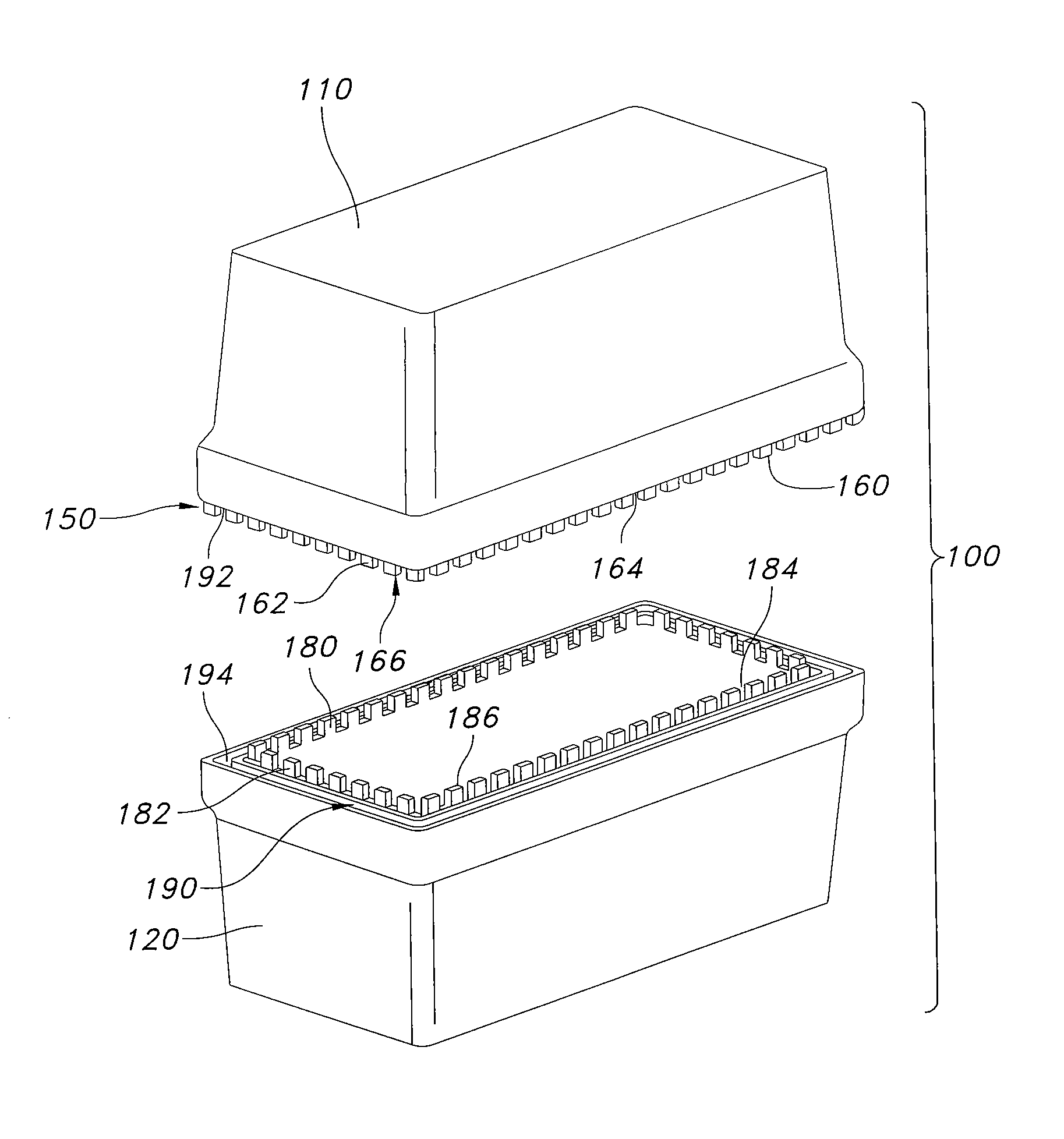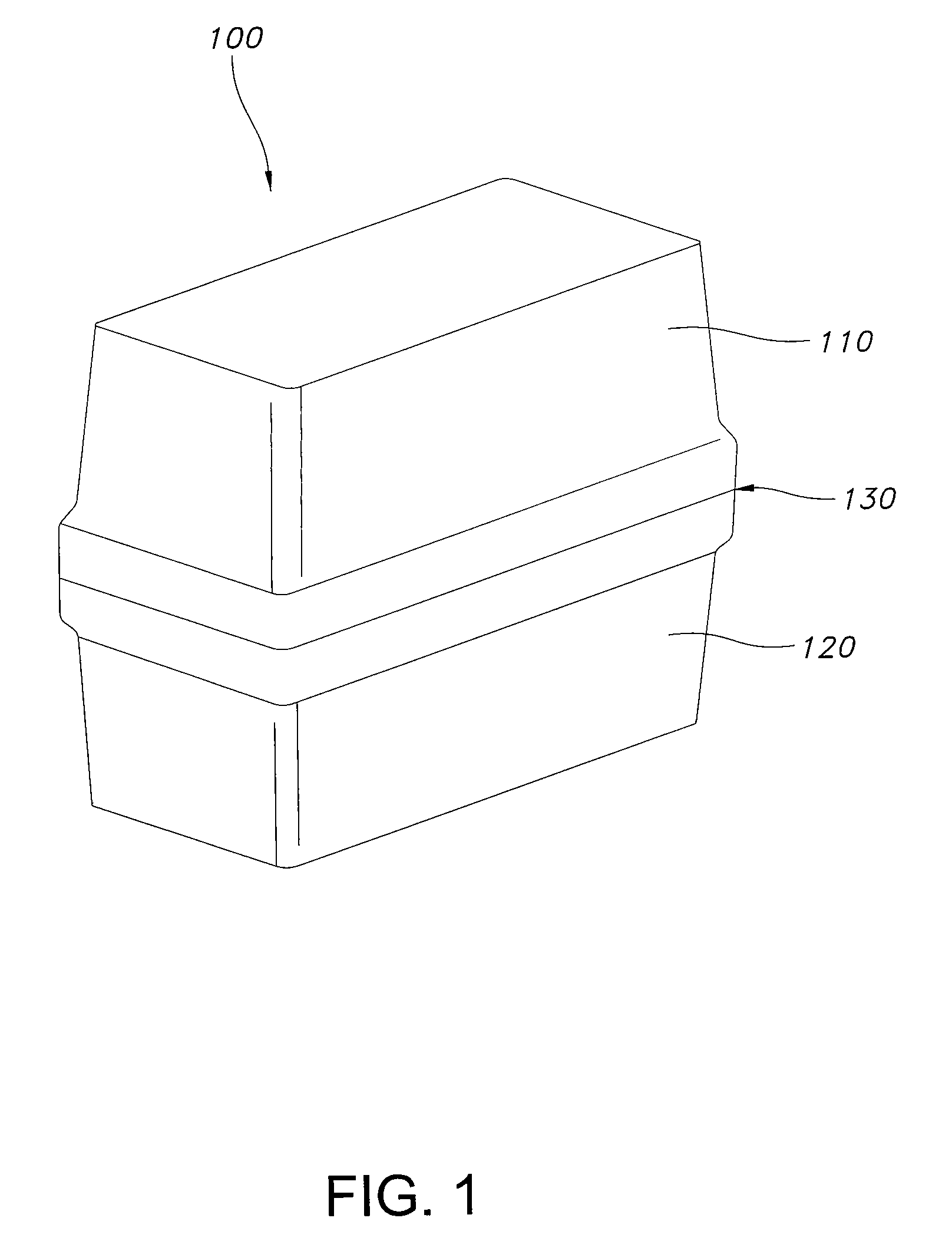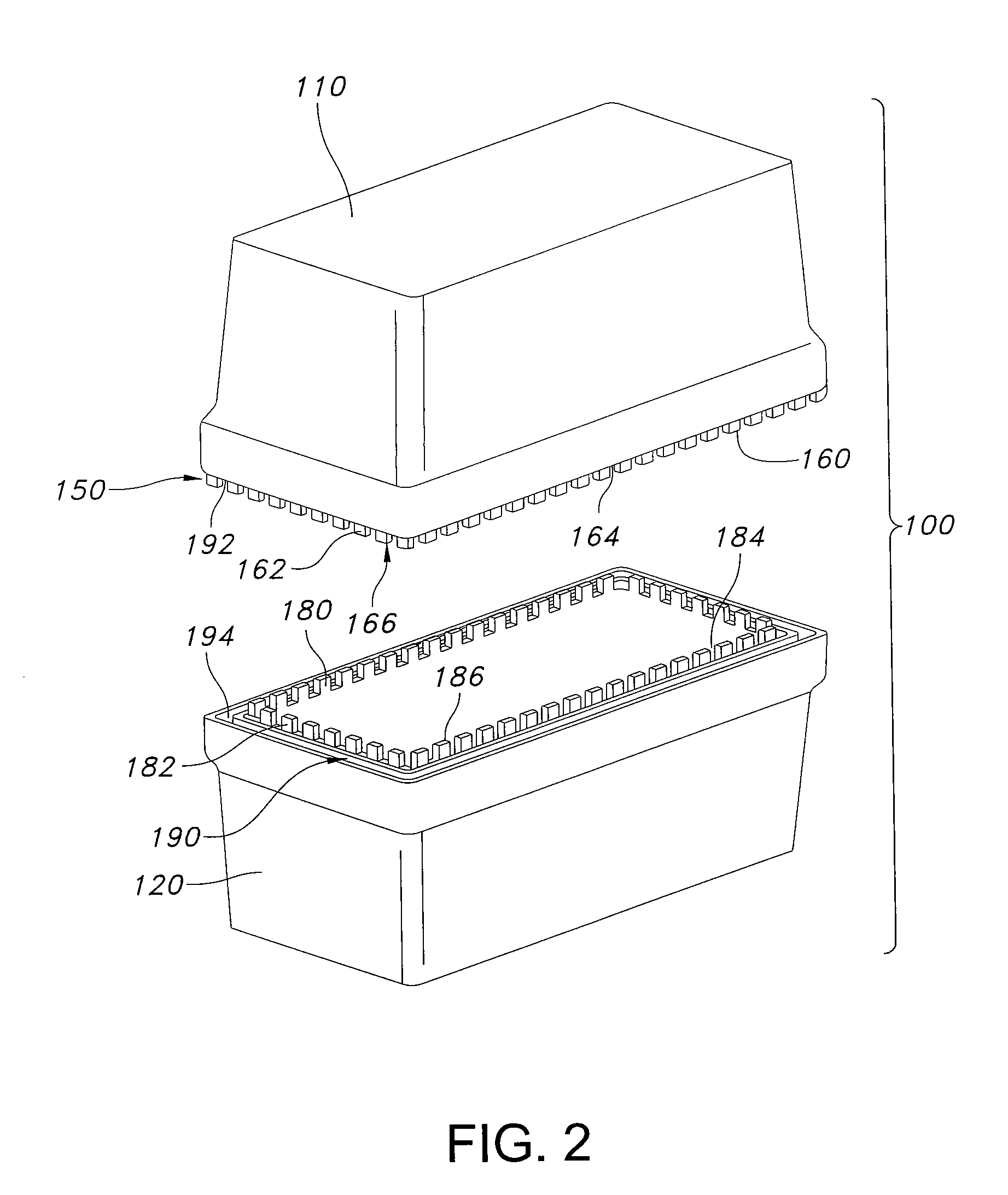Electro-conductive contact structure for enclosure sealing in housings
a contact structure and electro-conductive technology, applied in the field of enclosure sealing, can solve the problems of increasing size, shrinking and loss of elastomeric gaskets, and increasing the size of elastomeric gaskets
- Summary
- Abstract
- Description
- Claims
- Application Information
AI Technical Summary
Benefits of technology
Problems solved by technology
Method used
Image
Examples
Embodiment Construction
[0013]Although the invention is illustrated and described herein with reference to specific embodiments, the invention is not intended to be limited to the details shown. Various modifications may be made in the details within the scope and range of equivalents of the claims and without departing from the invention.
[0014]Housings in accordance with the invention resolve many of the drawbacks associated with conventional EMI and RFI shielding techniques. In preferred embodiments, the housings have an interleaved electro-conductive contact structure integrated in the housing. The contact structure is integrated in the design of the housing during manufacturing, such as by molding or machining the contact structure with the housing part. By integrating the contact structure into the design of the housing, there is complete freedom to design the contact structure when the housing is designed. The contact structure can be designed with configuration that is optimized to shield specific e...
PUM
 Login to View More
Login to View More Abstract
Description
Claims
Application Information
 Login to View More
Login to View More - R&D
- Intellectual Property
- Life Sciences
- Materials
- Tech Scout
- Unparalleled Data Quality
- Higher Quality Content
- 60% Fewer Hallucinations
Browse by: Latest US Patents, China's latest patents, Technical Efficacy Thesaurus, Application Domain, Technology Topic, Popular Technical Reports.
© 2025 PatSnap. All rights reserved.Legal|Privacy policy|Modern Slavery Act Transparency Statement|Sitemap|About US| Contact US: help@patsnap.com



